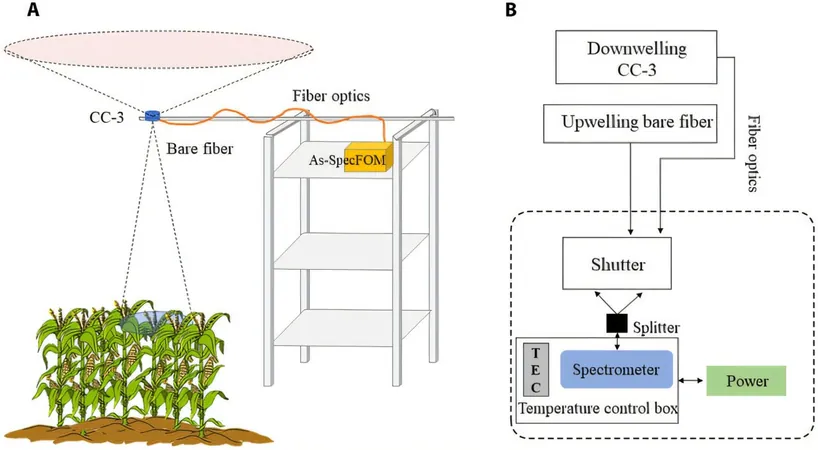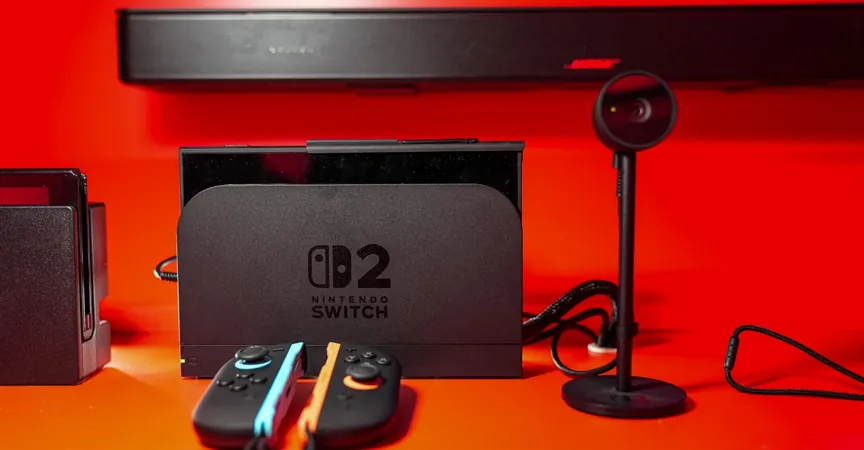
Affordable Spectrometers Revolutionize Plant Health Monitoring!
2025-01-10
Author: Noah
Introduction
In an exciting breakthrough, researchers from Nanjing University have proven that budget-friendly, low-configuration spectrometers can effectively measure solar-induced chlorophyll fluorescence (SIF)—the telltale red glow emitted by plants during photosynthesis. This remarkable discovery not only sheds light on the health and productivity of plants but also democratizes agricultural and ecosystem monitoring by utilizing cost-effective technology.
Research Findings
Published on December 18 in the Journal of Remote Sensing, this groundbreaking study highlights how plants utilize most of the sunlight they absorb for photosynthesis, but some excess energy is released as heat and SIF. This non-invasive indicator is crucial for assessing ecosystem health, agricultural productivity, and responses to environmental changes.
Traditional Methods vs. New Approach
Traditionally, retrieving SIF data required high-end spectrometers that, while precise, come with hefty price tags and maintenance challenges that limit their field application. Now, researchers aimed to evaluate whether low-configuration spectrometers could serve as practical alternatives for ground-based SIF observations.
Testing Methodology
To test this, the team compared a high-end spectrometer with its economical counterpart at two agricultural sites in China, one cultivating wheat and the other rice. They analyzed the spectrometers' abilities to measure SIF, track gross primary productivity (GPP), and identify key plant growth stages.
Results
Surprisingly, the results indicated that although there were differences in the absolute SIF values obtained, both types of spectrometers demonstrated similar trends, achieving correlations exceeding 90% with minimal errors. Remarkably, the low-configuration model was particularly efficient for wheat crops, registering a mere 2.5-day average lag behind the pricier model in tracking growth stages and productivity.
Expert Insight
This finding opens the door for low-configuration spectrometers to meet specific needs for field-based SIF observations, stated Lei Pei, the study's lead researcher at Nanjing University's International Institute for Earth System Sciences.
Future Directions
With these promising results, the research team plans to enhance the accuracy of SIF retrievals from low-configuration spectrometers by further investigating other factors that might affect performance.
Conclusion
Our ultimate ambition is to create a reliable framework that validates these instruments for in situ SIF observation missions, thereby broadening access to critical research in this area, Pei added. This evolution in technology not only signifies a leap in scientific capability but also holds immense potential for farmers and ecologists worldwide, allowing for more efficient monitoring of plant health and ecosystem dynamics at a fraction of the previous cost!
Call to Action
Don't miss out on the future of sustainable agriculture—these innovations might just be the key to unlocking better yields while protecting our environment!









 Brasil (PT)
Brasil (PT)
 Canada (EN)
Canada (EN)
 Chile (ES)
Chile (ES)
 Česko (CS)
Česko (CS)
 대한민국 (KO)
대한민국 (KO)
 España (ES)
España (ES)
 France (FR)
France (FR)
 Hong Kong (EN)
Hong Kong (EN)
 Italia (IT)
Italia (IT)
 日本 (JA)
日本 (JA)
 Magyarország (HU)
Magyarország (HU)
 Norge (NO)
Norge (NO)
 Polska (PL)
Polska (PL)
 Schweiz (DE)
Schweiz (DE)
 Singapore (EN)
Singapore (EN)
 Sverige (SV)
Sverige (SV)
 Suomi (FI)
Suomi (FI)
 Türkiye (TR)
Türkiye (TR)
 الإمارات العربية المتحدة (AR)
الإمارات العربية المتحدة (AR)